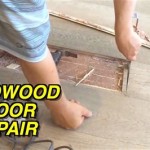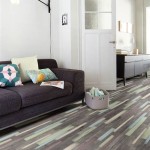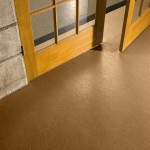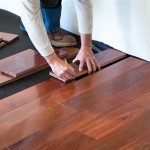Can You Replace a Single Laminate Floor Board?
Replacing a single damaged laminate floor board is often a preferred solution over replacing the entire floor. While it can be a challenging task, it avoids the significant cost and disruption of a full floor replacement. The feasibility and complexity of this project depend on several factors, including the type of locking system used, the availability of replacement boards, and the location of the damaged board.
Laminate flooring utilizes various locking systems. Click-lock systems are the most common and generally easier to work with for individual board replacement. These systems allow boards to be angled and clicked into place, making it possible to remove and replace a single board without disturbing too many surrounding pieces. Older glue-down or tongue-and-groove systems, however, present a greater challenge, often requiring the removal of multiple boards, increasing the risk of damage and making a perfect repair more difficult.
Locating a matching replacement board is crucial. Keeping leftover planks from the original installation is the ideal scenario. If no extra boards are available, contacting the original retailer or manufacturer is the next best option. Providing the product name, color code, and batch number, if known, significantly increases the chances of finding a perfect match. Keep in mind that even with the same product name and color, variations can exist between different production batches, making a precise match challenging.
The position of the damaged board significantly impacts the complexity of the replacement process. A board located near the edge of the room or near a doorway is generally easier to access and replace. Conversely, a board situated in the center of the room requires more effort and planning. The process typically involves carefully disassembling the floor from the nearest edge or access point to reach and remove the damaged plank.
Before beginning the replacement process, gather the necessary tools. These often include a pull bar, tapping block, rubber mallet, pry bar, and a utility knife. A pull bar is specifically designed to remove laminate planks without damaging the locking mechanisms. The tapping block and rubber mallet aid in gently maneuvering boards into place, while the pry bar assists with separating tightly locked planks. A utility knife is useful for trimming any underlayment or making necessary adjustments to the replacement board.
The replacement process begins with clearing the area surrounding the damaged board. Furniture and other obstacles need to be removed to provide adequate working space. Next, depending on the location of the damaged board, a section of the flooring leading to the damaged plank will need to be disassembled. This involves carefully detaching each board, starting from the closest accessible edge or doorway, and working towards the damaged piece. Utilize the pull bar and tapping block to minimize the risk of damaging the planks.
Once the damaged board is accessible, carefully detach it from the surrounding planks using the appropriate tools for the specific locking system. The replacement board should then be inserted, ensuring it is properly aligned and clicked or glued into place according to the flooring system. It is vital to check the fit and stability of the replaced board before reassembling the rest of the floor.
After successfully replacing the damaged board, the previously removed planks are carefully reassembled, ensuring that the locking mechanisms are properly engaged. Use the tapping block and rubber mallet to gently secure the boards without causing damage. Inspect the repaired area thoroughly for any gaps or inconsistencies in height. Once the floor is reassembled, replace any furniture or objects that were removed earlier.
While replacing a single laminate floorboard can be achieved, it’s essential to assess the extent of the damage. If multiple boards are damaged or the damage is extensive, a full or partial floor replacement might be more cost-effective and time-efficient in the long run. Furthermore, for particularly complex replacements or if dealing with older locking mechanisms, consulting a professional flooring installer is recommended to ensure a successful and seamless repair.
Maintaining a few spare laminate boards from the original installation is highly beneficial. This allows for easy replacement of individual damaged boards without the hassle of searching for a matching product. Store these extra planks in a climate-controlled environment to prevent warping or other damage.
Regular maintenance and cleaning contribute significantly to the lifespan of laminate flooring and reduce the likelihood of damage. Avoid excessive moisture, use appropriate cleaning products, and place protective pads under furniture legs to prevent scratches and dents. These preventative measures can help maintain the integrity of the floor and minimize the need for individual board replacements.
Understanding the intricacies of your specific laminate flooring system and utilizing the correct tools are crucial for a successful single-board replacement. While the process can be challenging, a properly executed repair restores the floor's aesthetics and functionality without the expense of a complete replacement. However, always assess the extent of the damage and consider consulting a professional for complex repairs or if you are uncomfortable with the process.

How To Easily Replace A Damaged Laminate Floor Plank Interior Design Wonderhowto

How To Repair Laminate Flooring Forbes Home

Replacing A Single Panel Vinyl Flooring For Ing In Gb

How To Replace Lock Vinyl Flooring

How To Replace A Damaged Laminate Board That S In The Middle Of Floor

How To Replace A Damaged Hardwood Floor Board Diy Family Handyman

How To Fix Laminate Flooring That Is Separating Experts Com

Common Mistakes When Laying Laminate Flooring Next Day Floors

How To Replace Flooring Floor Experts Tips On Replacement

How To Repair And Replace Wood Flooring Pro Tool Reviews
See Also







